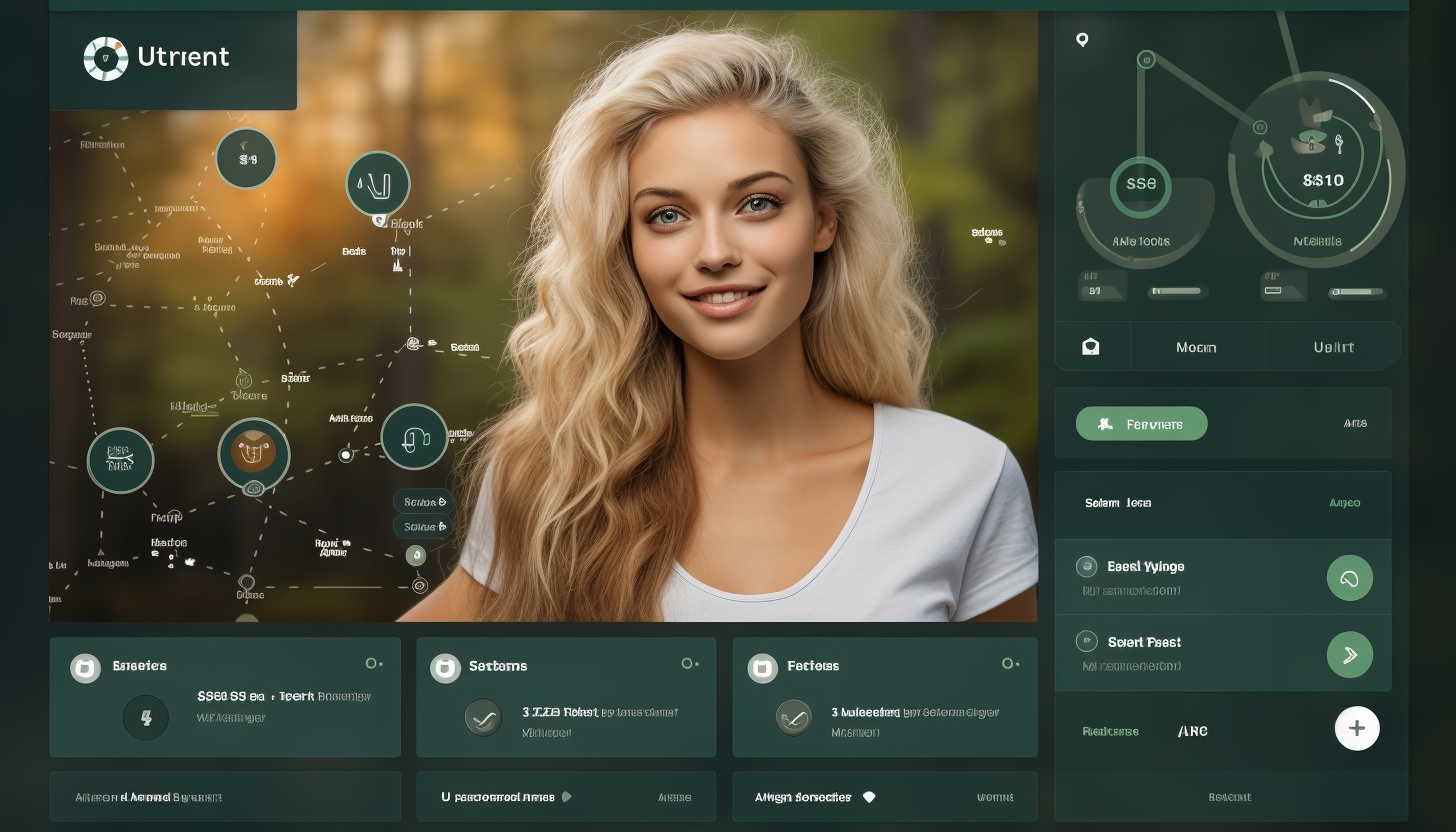
The Science Behind Matching Algorithms: How Dating Apps Pair Potential Partners
Are you curious about the inner workings of dating apps? Like a skilled matchmaker, these algorithms analyze vast amounts of data, assessing psychological compatibility and utilizing machine learning.
They use your preferences and filters to find potential partners, continuously improving through real-time feedback.
In this article, we delve into the science behind matching algorithms, uncovering the secrets that help dating apps pair potential partners with uncanny accuracy.
Get ready to explore the fascinating world of data-driven love connections.
Data Collection and Analysis

To improve matching accuracy, dating apps collect and analyze user data. By gathering information about your preferences, interests, and behavior, these apps aim to find the best potential matches for you. The data collected can include your age, location, occupation, education level, hobbies, and even your social media activity. With this wealth of information, dating apps can create detailed user profiles that serve as the foundation for their matching algorithms.
Analyzing user data allows dating apps to identify patterns and trends that can lead to more successful matches. For example, if the majority of users with similar interests and backgrounds tend to be compatible, the app can prioritize those matches for you. Additionally, by analyzing the data of successful couples, dating apps can identify common traits and characteristics that contribute to a strong relationship. This information can then be used to refine the matching algorithms and improve future match suggestions.
As we transition into the subsequent section about psychological compatibility assessment, it’s important to note that data collection and analysis is just one aspect of how dating apps pair potential partners. While the analysis of user data provides valuable insights, it’s equally important to consider factors such as personality traits, values, and goals, which are crucial for assessing psychological compatibility.
Psychological Compatibility Assessment

In the realm of psychological compatibility assessment, dating apps utilize various methods to evaluate users’ personality traits, values, and goals in order to pair potential partners. Understanding the importance of psychological compatibility, these apps employ advanced algorithms to analyze user data and provide meaningful matches.
One common method used by dating apps is the administration of personality tests. These tests assess individuals based on key personality traits, such as extraversion, agreeableness, and openness to experience. By analyzing the results, dating apps can identify users who’ve compatible personality profiles, increasing the likelihood of a successful match.
Furthermore, dating apps also consider users’ values and goals when assessing psychological compatibility. Values such as family, career, and spirituality, as well as goals related to long-term commitment or casual dating, are taken into account. By aligning users’ values and goals, dating apps can help individuals find partners who share similar visions for the future.
To increase the accuracy of psychological compatibility assessment, dating apps also integrate user feedback. Users are often asked to rate their satisfaction with previous matches, providing valuable data for future matching algorithms. By incorporating user feedback, dating apps can continuously improve their ability to assess psychological compatibility and provide more meaningful connections.
Machine Learning and Artificial Intelligence

Utilizing machine learning and artificial intelligence, dating apps enhance their matching algorithms to analyze user data and pair potential partners. These advanced technologies allow dating apps to go beyond basic preferences and delve into the intricacies of human behavior and attraction.
Machine learning algorithms work by analyzing vast amounts of user data, including profile information, preferences, and past interactions. These algorithms use this data to identify patterns and trends, learning from each interaction to improve future matches. By leveraging artificial intelligence, dating apps can continuously adapt and refine their algorithms to provide more accurate and personalized matches.
One way machine learning and artificial intelligence contribute to better matching is through collaborative filtering. This technique compares a user’s preferences and behavior with those of other users to identify potential matches. For example, if two users have similar interests, hobbies, or mutual connections, the algorithm may suggest a match based on these shared characteristics.
Additionally, machine learning algorithms can also analyze user behavior within the app to predict compatibility. By tracking user engagement, messaging patterns, and response rates, these algorithms can identify common traits and behaviors that are indicative of a successful match. This data-driven approach allows dating apps to make more informed recommendations and increase the likelihood of finding a compatible partner.
Matching Preferences and Filters

By considering your matching preferences and applying various filters, dating apps can further refine their algorithms to provide more tailored and accurate potential partner suggestions. These matching preferences and filters play a crucial role in helping you find the right match by narrowing down the pool of potential partners based on specific criteria.
Here are four key ways in which dating apps utilize matching preferences and filters:
– Location: Dating apps allow you to set your preferred location, ensuring that you’re matched with people who are geographically close to you. This filter is particularly important for those seeking local connections or long-term relationships.
– Age Range: By specifying your desired age range, dating apps can filter out individuals who fall outside of your preferred age group. This helps to ensure that you’re matched with people who are within your desired age range, increasing the likelihood of compatibility.
– Interests and Hobbies: Dating apps often provide options for users to list their interests and hobbies. By incorporating these preferences into the algorithm, apps can match users who share similar interests, increasing the chances of forming meaningful connections.
– Deal Breakers: Many dating apps allow users to specify deal breakers, such as smoking, children, or religious beliefs. By taking these preferences into account, apps can eliminate potential matches that don’t meet your specific criteria, saving you time and effort.
Real-time Feedback and Iterative Improvement

To continuously enhance their matching algorithms, dating apps rely on gathering real-time feedback from users and making iterative improvements. By collecting feedback from users, dating apps can gain valuable insights into the effectiveness of their algorithms and identify areas for improvement. This feedback can come in various forms, such as user ratings, reviews, and user behavior data.
One way dating apps gather real-time feedback is through user ratings and reviews. Users can provide feedback on their matches, indicating whether they found the match to be a good fit or not. This feedback helps dating apps understand the success rate of their algorithm and make adjustments accordingly. Additionally, users can leave reviews, sharing their overall experience with the app and suggesting ways to improve.
User behavior data is another valuable source of real-time feedback. By tracking user interactions, such as swipes, messages, and profile views, dating apps can analyze patterns and identify areas where the algorithm can be optimized. For example, if a large number of users are consistently swiping left on certain profiles, it may indicate that the algorithm needs to be adjusted to better cater to user preferences.
Iterative improvement is a key aspect of enhancing matching algorithms. By continuously analyzing real-time feedback and making adjustments, dating apps can refine their algorithms to provide more accurate and relevant matches. This iterative process allows apps to adapt to changing user preferences and improve the overall user experience.
Conclusion
In conclusion, the science of matching algorithms in dating apps is a fascinating blend of data collection, psychological assessments, machine learning, and user preferences.
Through real-time feedback and iterative improvement, these algorithms strive to pair potential partners with precision and accuracy.
The use of alliteration adds depth and complexity to the analysis, highlighting the intricate nature of this data-driven process.
Ultimately, these algorithms offer a promising avenue for finding compatible partners in the ever-evolving world of online dating.






